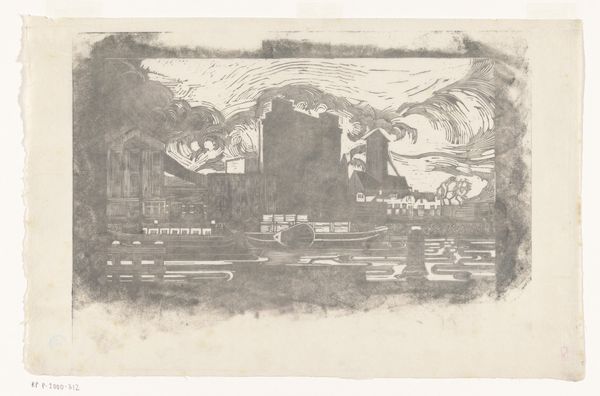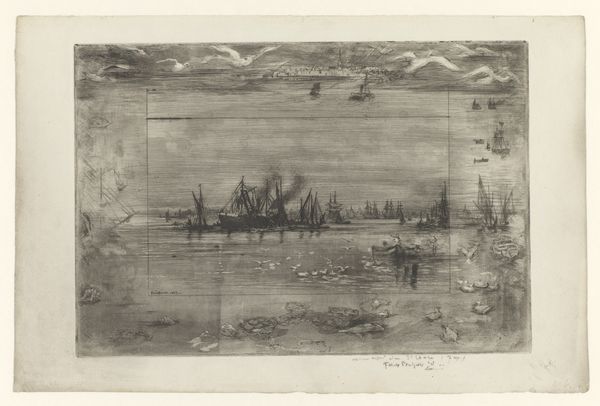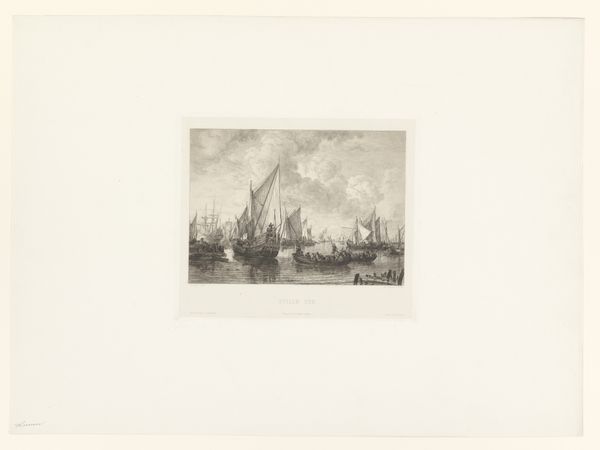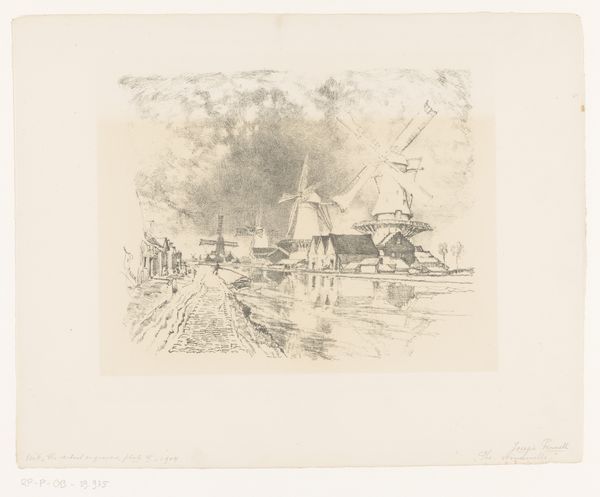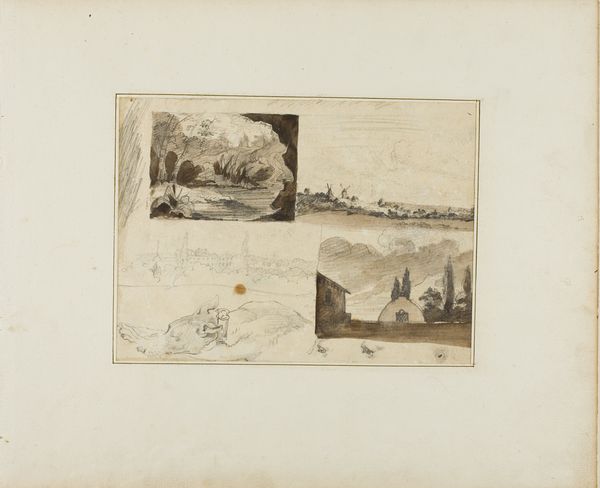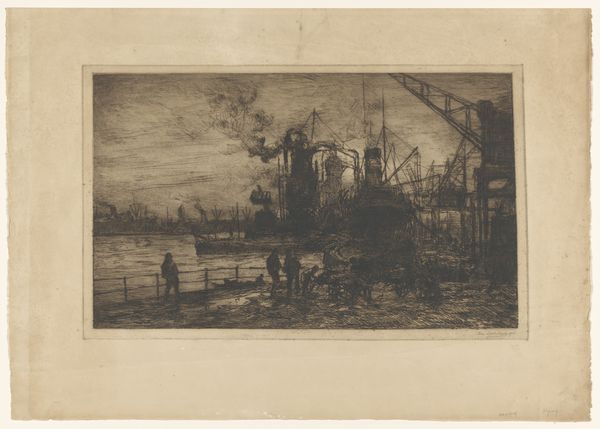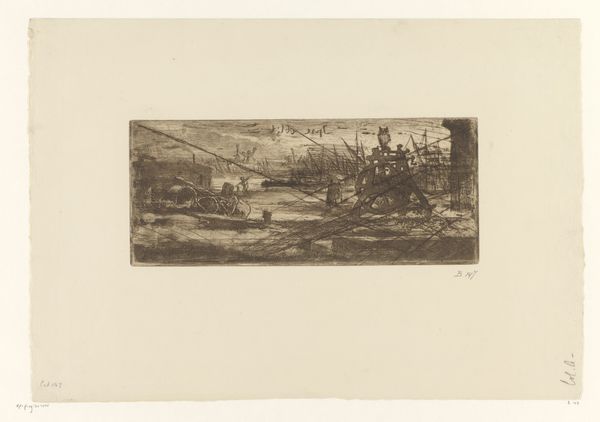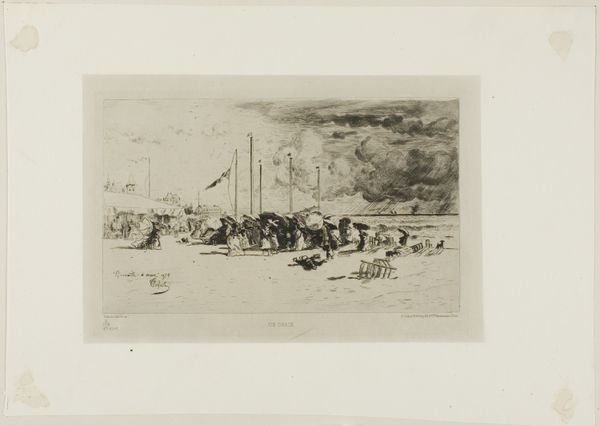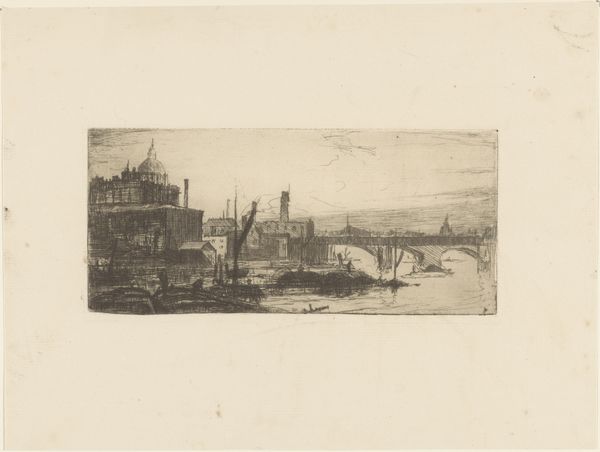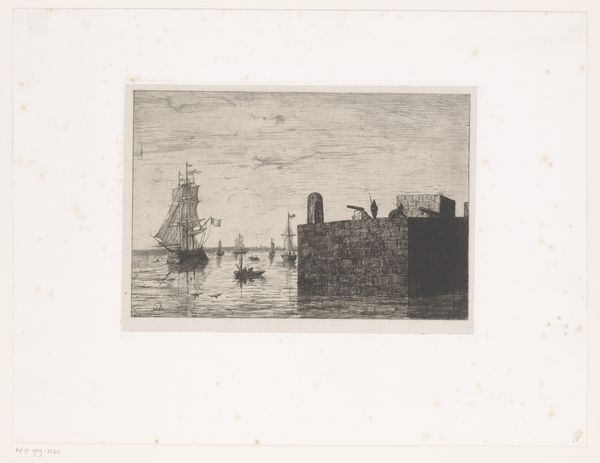
Gezicht op Dinant en zeegezichten met zeilschepen 1871
0:00
0:00
print, etching
# print
#
impressionism
#
etching
#
landscape
#
cityscape
Dimensions: height 109 mm, width 165 mm
Copyright: Rijks Museum: Open Domain
Editor: This etching by Carel Nicolaas Storm van 's-Gravesande, titled "View of Dinant and Seascapes with Sailing Ships," dates back to 1871. It's currently at the Rijksmuseum. What strikes me is the almost fragmented composition, the way he combines a cityscape with separate studies of sailboats. What do you make of it? Curator: The fragmented composition speaks volumes. Think about the rise of industrialization at this time. How did it disrupt traditional ways of life, not just in labor, but in how people experienced the world? This isn't a simple landscape; it’s a negotiation between the idyllic and the rapidly changing reality. Notice how the rigid lines of the buildings in Dinant contrast with the flowing, almost chaotic seascapes. Is there perhaps a commentary on the imposition of human structures onto the natural world? Editor: That's interesting! I hadn't thought about the industrial aspect. The juxtaposition feels almost like a critique now. Is he perhaps suggesting the futility of trying to contain nature, given its wildness and constant motion? Curator: Precisely. The multiple viewpoints, almost like a collage, reflect a world no longer experienced in a linear, singular way. The impressionistic style itself, with its emphasis on fleeting moments and subjective perception, challenges the established order. Consider, too, how maritime power was often linked to colonial ambition in the 19th century. Do you see any echoes of that in the portrayal of the sailing ships? Editor: Hmm, that’s a good question. I need to think more about that colonial angle... Curator: Indeed. The artist offers no easy answers, but prompts us to question the narratives embedded within landscapes and seascapes. Editor: I hadn't really connected it all, but now I understand better the tensions the artist might have wanted to communicate about society. Curator: Exactly! It is art that doesn't settle, and lets you discover through questions.
Comments
No comments
Be the first to comment and join the conversation on the ultimate creative platform.

